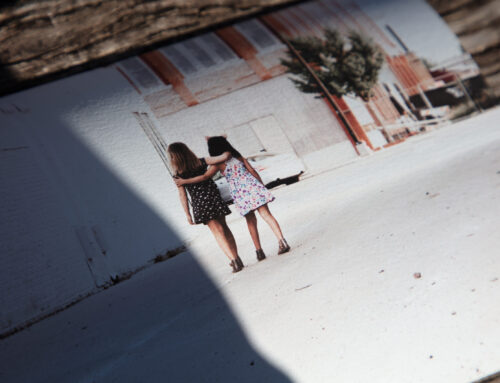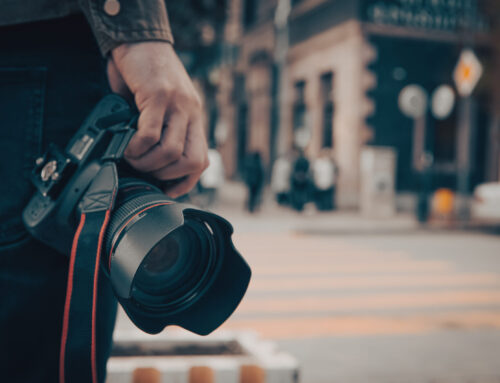What’s the difference? Photographic prints vs. fine art prints…
Photography has come a long way since we’ve been in business! With advancements in technology, there are now various ways to print photographs, each with its own set of pros and cons. The two most popular methods and the main ones we use here at Streets Imaging are the silver halide process (photographic print) and the pigment-based inkjet process (fine art print). This article is aimed to help you understand more about photographic prints vs. fine art prints and help choose which method is best for you.
The silver halide process, also known as traditional photo printing, is a chemical-based process that involves exposing light-sensitive paper to light and then processing it with chemicals to create the final print. The type of printing has been around for donkey’s ears and is still the Gold Standard used around the globe. One of the biggest advantages of the silver halide process is that it produces high-quality prints with rich colours and deep blacks. The emulsion layer of the paper delivers beautiful smooth tones, ideal for portraits. With its protective coating, these prints are plenty durable and can last for a lifetime and more without fading.
On the other hand, fine art inkjet printing is a digital printing method that uses specialized printers and high-quality archival inks to produce prints. This process has gained popularity in recent years, particularly in the fine art world, as it allows for high-quality reproductions of artwork and photographs and we’ve seen that change happen here significantly over the last few years. One of the advantages of the inkjet printing process is that it can produce small to very large prints on a range of surfaces, including canvas, paper and adhesive stocks. Large chain businesses offering dry lab services also market their printing as inkjet. However, it’s essential to know if the inks they use are dye-based or pigment-based. While the print quality may be similar at a glance, dye-based inks will fade within 20 years of typical home conditions (despite claims made to say otherwise).

So, photographic prints vs. fine art prints – why choose one over the other? One of the disadvantages of silver halide printing, compared to inkjet printing, is that it has a slightly smaller colour range. Silver halide prints may not be able to reproduce a few really bright colours or vibrant hues accurately. On the other hand, inkjet printing is more costly and can produce prints that are less durable than traditional photo prints. This means that special care needs to be taken when handling these prints.
Despite this, the silver halide and the giclee fine-art process are still considered the best way to print photographs and artwork. They produce high-quality prints that can last for decades or more and allow you to express your creativity as an artist or photographer in unique ways. Ultimately, the choice between these two processes will depend on several factors, including the image itself, what you want to do with the print, the desired final product, and your budget.
So while there are pros and cons to both photographic prints and fine art prints, both methods remain popular choices for printing photographs and artwork. Whether you choose one process over the other will depend on your individual needs and preferences, but either way, you can be assured that you are using the best method for producing high-quality prints.
Think you’d like to give one of our papers a try? If you’re new to printing our free test print offer is the best way to have a go – risk-free. If you’re not sure which print method is best for your needs, get in touch with one of our staff and we’d be happy to go into further detail.
What’s the difference? Photographic prints vs. fine art prints…
Photography has come a long way since we’ve been in business! With advancements in technology, there are now various ways to print photographs, each with its own set of pros and cons. The two most popular methods and the main ones we use here at Streets Imaging are the silver halide process (photographic print) and the pigment-based inkjet process (fine art print). This article is aimed to help you understand more about photographic prints vs. fine art prints and help choose which method is best for you.
The silver halide process, also known as traditional photo printing, is a chemical-based process that involves exposing light-sensitive paper to light and then processing it with chemicals to create the final print. The type of printing has been around for donkey’s ears and is still the Gold Standard used around the globe. One of the biggest advantages of the silver halide process is that it produces high-quality prints with rich colours and deep blacks. The emulsion layer of the paper delivers beautiful smooth tones, ideal for portraits. With its protective coating, these prints are plenty durable and can last for a lifetime and more without fading.
On the other hand, fine art inkjet printing is a digital printing method that uses specialized printers and high-quality archival inks to produce prints. This process has gained popularity in recent years, particularly in the fine art world, as it allows for high-quality reproductions of artwork and photographs and we’ve seen that change happen here significantly over the last few years. One of the advantages of the inkjet printing process is that it can produce small to very large prints on a range of surfaces, including canvas, paper and adhesive stocks. Large chain businesses offering dry lab services also market their printing as inkjet. However, it’s essential to know if the inks they use are dye-based or pigment-based. While the print quality may be similar at a glance, dye-based inks will fade within 20 years of typical home conditions (despite claims made to say otherwise).

So, photographic prints vs. fine art prints – why choose one over the other? One of the disadvantages of silver halide printing, compared to inkjet printing, is that it has a slightly smaller colour range. Silver halide prints may not be able to reproduce a few really bright colours or vibrant hues accurately. On the other hand, inkjet printing is more costly and can produce prints that are less durable than traditional photo prints. This means that special care needs to be taken when handling these prints.
Despite this, the silver halide and the giclee fine-art process are still considered the best way to print photographs and artwork. They produce high-quality prints that can last for decades or more and allow you to express your creativity as an artist or photographer in unique ways. Ultimately, the choice between these two processes will depend on several factors, including the image itself, what you want to do with the print, the desired final product, and your budget.
So while there are pros and cons to both photographic prints and fine art prints, both methods remain popular choices for printing photographs and artwork. Whether you choose one process over the other will depend on your individual needs and preferences, but either way, you can be assured that you are using the best method for producing high-quality prints.
Think you’d like to give one of our papers a try? If you’re new to printing our free test print offer is the best way to have a go – risk-free. If you’re not sure which print method is best for your needs, get in touch with one of our staff and we’d be happy to go into further detail.





